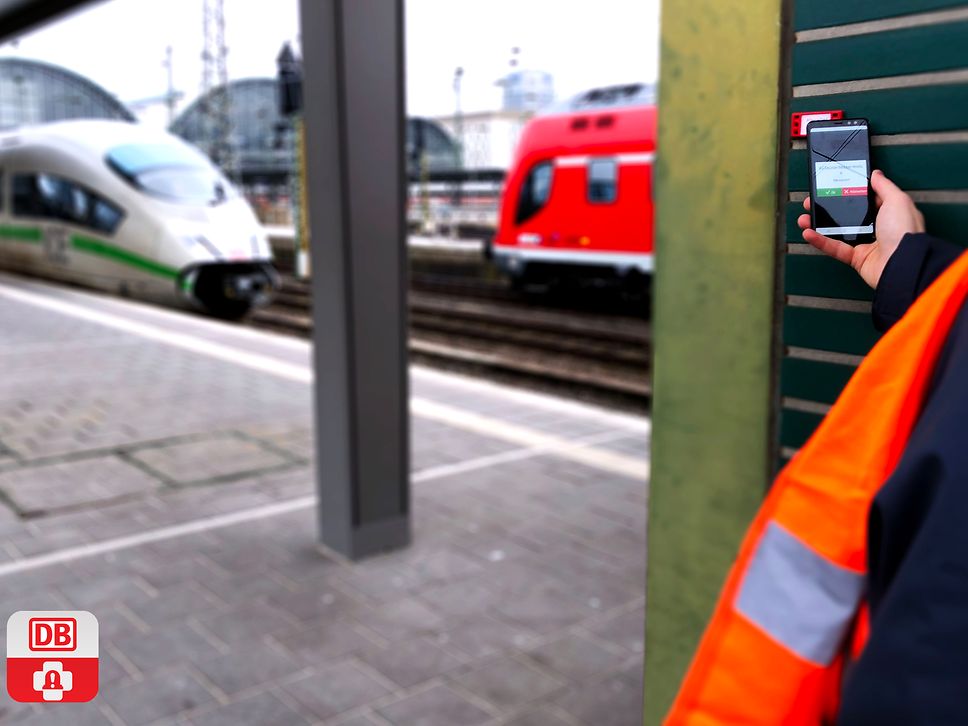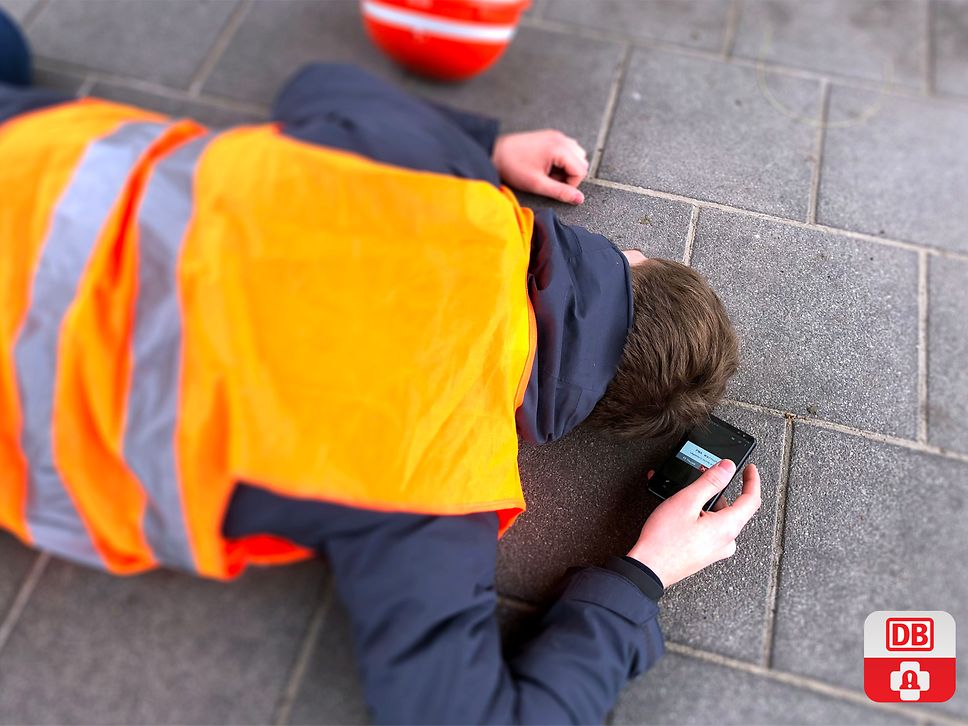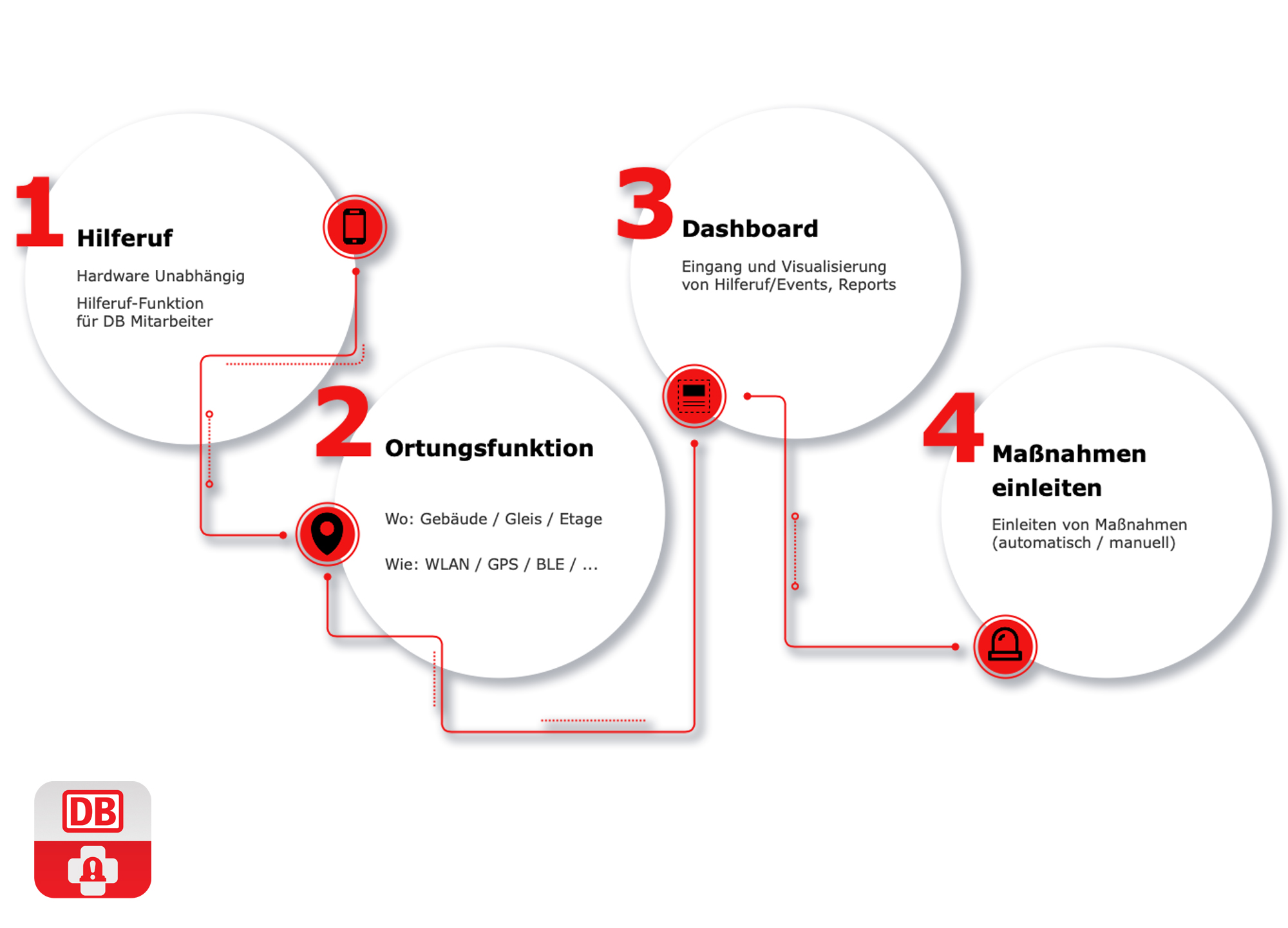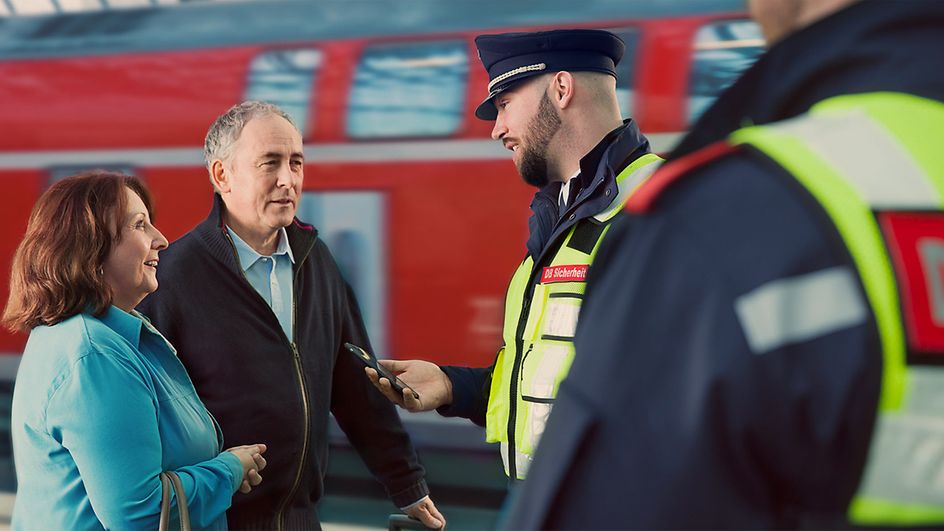Emergency Services
Article: Smart assistance in an emergency
03/2020 – Technology to the rescue! A smart emergency system quickly assists DB employees in difficult situations.
In all business segments within Deutsche Bahn, an increasing number of activities needs to be performed by employees working alone. However, a prerequisite for such work is that these employees have the best possible safeguards and receive prompt assistance in emergency situations. Even though this applies right across the DB Group, it is especially relevant for DB Energie GmbH employees with responsibility for maintaining traction substations along the railway line.
In the past, two employees were assigned to certain tasks. Now, however, these tasks are increasingly undertaken by employees working alone. Here, the relevant employee travels to one of several thousand traction substations that exist along the railway lines in Germany – often quite a long distance from the nearest town. “Since we do not know what is happening with the employee on site, we have developed a highly versatile mobile solution,” says Dirk Schönfeld, Project Owner of Emergency Service.
Check-in and check-out for greater safety
First of all, specific software is installed on the work phones of employees working alone. In the example involving DB Energie GmbH, the employee uses the check-in and check-out function available, simply by holding their phone against the NFC chip located at the station.
The application also uses the smartphone’s quiet sensor technology to register if the phone does not move for a longer period of time or if a certain position angle is exceeded, which could indicate, for example, that the employee is lying on the ground. Consequently, an alarm is triggered and the subsequent steps defined in the system are executed. In order to avoid false alarms, the system makes an automatic test call first. If the employee does not respond, the alarm is immediately triggered in an operations centre where information regarding what, where and who is collated under consideration of all applicable data protection guidelines. This flexible solution can be enhanced, if required, and may also use other phone functions such as the microphone or camera.
"From the very outset, we did not want to develop a standalone solution but rather a platform that could be used in several business segments within DB."

Dangerous situations can arise anywhere within the DB Group, not just on the railway line. For this reason, Emergency Service was developed in such a way that it is not only usable for one professional group. Instead, it should serve various clients and different use cases. Accordingly, the platform is located in the DB cloud and can therefore be integrated across the DB Group. “From the very outset, we did not want to develop a standalone solution but rather a platform that could be used in several business segments within DB,” explains Dirk Schönfeld.
No additional hardware
The possibilities are endless! For example, logistics and maintenance employees also regularly work alone. Here, the mobile Emergency Service solution can also considerably increase employee safety and process reliability without the need for any additional hardware: “We do not want to further complicate our colleagues’ work processes unnecessarily,” confirms Dirk Schönfeld. An app is installed on the work phone and Emergency Service automatically controls the rest as far as possible.
However, the platform also provides the option to integrate stationary solutions. For example, this would be relevant for DB Travel Centre employees in direct contact with customers at the ticket counter. At the touch of a button, they could quickly and safely signal that they have a problem and need assistance. Once again, very little additional hardware is required here. “The system can use existing hardware to connect to the work station, which can be set up in such a way that, for example, an employee could trigger an alarm simply by placing the palm of their hand on the keyboard,” explains Dirk Schönfeld. Emergency Service has given rise to a platform that can provide immediate assistance to all Deutsche Bahn employees, regardless of where they are working within the DB Group.





